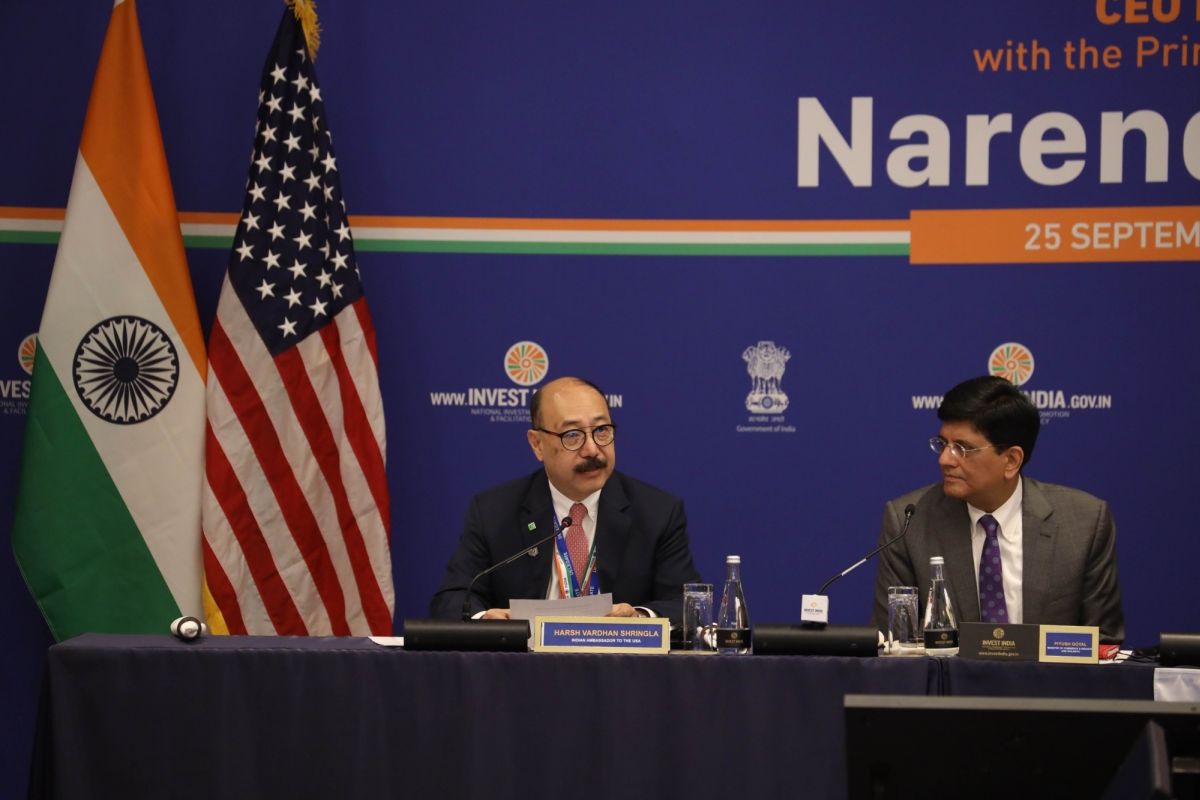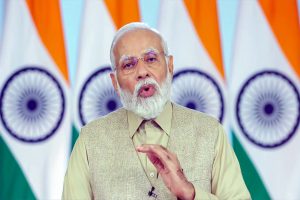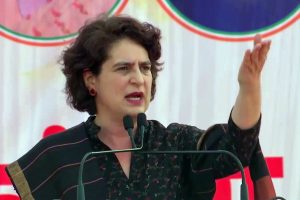The announcement designating Harsh Vardhan Shringla, the present Indian ambassador to the United States, as the next foreign secretary of India has triggered another round of celebration in Darjeeling district. Chokila Iyer, who became the first lady foreign secretary of India in 2001, also hailed from this historically famous Queen of the Hills. A relatively small district in West Bengal, located in the strategic Chicken’s Neck corridor that connects the north-eastern region with the rest of India and the entire Eastern Himalaya, has produced a range of freedom fighters, public intellectuals, administrators, sportspersons, musicians, politicians, bureaucrats, scientists, travellers and literary figures.
Shringla, a widely known diplomat particularly in neighbouring countries, has had a chequered career in the management of foreign affairs. He takes over when one of his own senior colleagues, Subrahmanyam Jaishankar, a seasoned and astute diplomat, heads the Ministry of External Affairs. There are expectations galore in terms of consolidation and fresh initiatives in Narendra Modi’s Neighbourhood First policy.
Darjeeling has been on the global map because of early British settlement, its orthodox variety of tea, affluent biodiversity, vibrant political culture, salubrious location in the lap of the Himalayas and prolific growth of educational institutions. This is a region which emerged out of various treaties and arrangements with neighbouring countries including Sikkim, Bhutan and Nepal. Two arbitrators, GWA Lloyd and JW Grant, appointed by Governor-General Lord William Bentinck in 1828 on the urging of Raja Tsugphud Namgyal to resolve a boundary dispute between Nepal and Sikkim, are said to have actually discovered this Sikkimese village known as Darjeeling. James Herbert surveyed the land in 1830. After it was gifted to the British Indian government in 1835, Archibald Campbell, who had served in Nepal (1830-38) as a surgeon to the residency in Kathmandu, was sent as the first superintendent of this new hill station.
Darjeeling was profusely used by the British regime to penetrate into further highlands in Tibet, Bhutan and northeast frontier. The historic Younghusband mission to Tibet in 1904 also saw its conceptual and planning phase partly in Darjeeling. John Dalton Hooker, who closely worked with Campbell and others, extensively travelled in the Sikkim Himalaya and parts of Nepal. He made epoch-making contributions on the nature and contents of botanical resources largely depicted in his Himalayan Journal.
A place loved by scores of learned men and creative minds, it was in one of his sojourns to the Mungpoo cinchona plantation ridge that Rabindranath Tagore wrote his widely-read poem ‘Janmodin’. Mother Teresa, who started her teaching career at St Marys High School in Calcutta, was ordained by the Lord in 1946 while travelling from Darjeeling to the foothills on the Toy Train. Sister Nivedita, one of the closest friends and disciples of Swami Vivekananda, served the countrymen from Darjeeling. Alexander Csoma de Koros, a Hungarian traveller who completed Tibetan-English Dictionary and Grammar of the Tibetan Language in 1834 under the auspices of the Asiatic Society in Kolkata, breathed his last in Darjeeling.
A large number of schools set up by missionaries like the Jesuits attracted hugely diverse communities and religions and made Darjeeling a highly pluralistic polity and society while keeping the cultures of the indigenous Lepchas, Bhutias and Nepalis intact. Besides the first hydel power plant of Asia built at Sidrapong in 1897, four major interventions brought Darjeeling to the global map, namely tea plantations, cinchona (quinine) plantations, the building of Hill Cart Road in the 1860s, and finally the Darjeeling Himalayan Railway in 1881. The Toy Train is now on the World Heritage list.
All these newer institutions and practices transformed the quiet and pristine hill town into a compact, tranquil and economically vibrant zone. India’s freedom movement and the First and Second World Wars and soon gripped the region. Then it’s a very charming and prolific story about how a small ‘partially excluded area’ contributed to the building of modern India. The list of freedom fighters, war heroes and ‘shahids’ coming out of this region is just unimaginable which also includes LB Sewa, the inspector general of police killed during the Mizoram Insurgency in the 1970s. In the Constituent Assembly of India, two members, Dambar Singh Gurung and Ari Bahadur Gurung were from Darjeeling.
Darjeeling figured everywhere. At the global level, for tea connoisseurs and malaria victims, the Queen of the Hills became a household name. For the Indian economy, these commodities along with jute earned millions in much-coveted foreign currency. Surprisingly, at one point of time, Darjeelingites like Theodore Manen, secretary of the India National Congress; Mayadevi Chettri, a close confidante to Pandit Nehru; and Ratanlal Brahmin, a founder member of the Communist Party of India Marxist, facilitated the convergence of well-known national political leaders in Darjeeling. This small hill terrain produced a score of Olympic players and national champions including Olympians like Chandan Singh Rawat in football, and CS Gurung and BS Chettri in hockey. For many years, the first set of Everest conquerors like Tenzing Sherpa and Nawang Gombu mesmerised adventure sports.
Louis Banks in jazz, Bhushan Lakhandri in choreography, Binod Pradhan in cinematography, Ramesh Sharma in films, and Ranjit Gajmer, Aruna Lama and Kumar Subba in music, and BD Pradhan in communication technology remained dominant national achievers. Amber Gurung reached the pinnacle of his glory when he composed the new national anthem of Nepal. Mani Kumar Chettri and Ramkrishna Sharma remained doyens in the medical and legal professions. The literary journey started by Ganga Prasad Pradhan, Surya Bikram Gyawali, Dharnidhar Sharma and Parasmani Pradhan steadily got enriched and heightened in its glory by indigenous writers and Sahitya Akademy winners. Many of the promising Darjeelingites including Randhir Subba, Lain Singh Bangdel, Parijat, Man Bahadur Mukhia, Iswar Ballav and Anuradha Koirala reached the height of their professional careers in Nepal.
A large number of intellectuals, social activists, professionals, bureaucrats and artists who were at one point of time associated and lived in Darjeeling have never forgotten to mention their reminiscences. Fred Pinn’s Darjeeling Letters, Leela Seth’s On Balance, Bhaskar Ghose’s Doordarshan Days and Rehman Sobhan’s Untranquil Recollections are only indicative of the plethora of publications.
Darjeeling with literally four international borders – Bangladesh, Bhutan, China and Nepal – has always been a national security-sensitive zone. Large scale refugee movements, migration, disasters, wars and conflicts around and internal instabilities triggered by extreme left Naxalite movements led by Kanu Sanyal and Charu Majumdar in the 1960s and 1970s, and also the protracted identity-based Gorkhaland movement have been a formidable challenge to the government and a feast for researchers across the world. In fact, it was Darjeeling that spearheaded the language movement that finally enshrined Nepali in the eighth schedule of the constitution of India in 1992.
(The Kathmandu Post/ANN)











